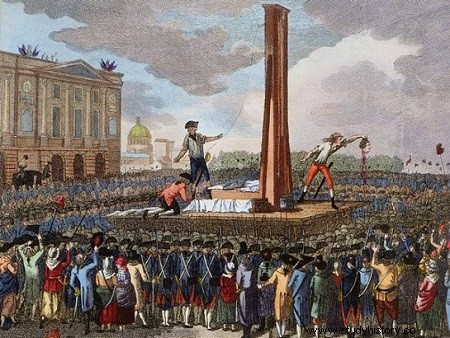
Meeting on September 21, the Convention first decided to ratify the abolition of royalty before proclaiming, the next day, the birth of the French Republic, the first of its name. But, for the new assembly, the major decision remains the fate of the king. The Convention, which had just taken cognizance of the documents in the iron cabinet*, decided to immediately prepare the trial of Louis XVI, having itself taken charge, in defiance of the fundamental rule of separation of powers, of judging the King. Begun in December 1792, the trial of Louis XVI ended in January of the following year with a verdict of death.
January 21, 1793, the king ascended the scaffold .
The irreparable has just been committed; this act, with enormous consequences, immediately led to two new difficulties for the young Republic:on the one hand, the formation of the first coalition*, on the other hand, the beginning of serious uprisings in the departments of West, mainly. In addition, the betrayal of Dumouriez, with the risks of invasion inherent therein, and the dissensions born between Girondins and Montagnards, put the Republic in real danger. Exasperated by the excesses of the Parisian sections, the Girondins obtained the arrest of Marat* and the creation, on May 18, of a Commission of Twelve, responsible for monitoring the actions of the Commune. The result was not long in coming:Marat was rehabilitated, the Commission of Twelve was abolished less than ten days after its creation and the Girondins found themselves threatened.
After obtaining the reinstatement of the Commission for a few days, the Brissotins, a moderate faction of the Girondins, were led, 29 in number, to the scaffold:the mountain autocracy began its career.
Author:Clementine In times of war as in times of peace, spies have always worked with the powerful . Julius Caesar, Louis XIV or Churchill, all needed information to carry out their policy and try to guess enemy strategies, the weakness of a neighboring country or even potential threats to the sov
